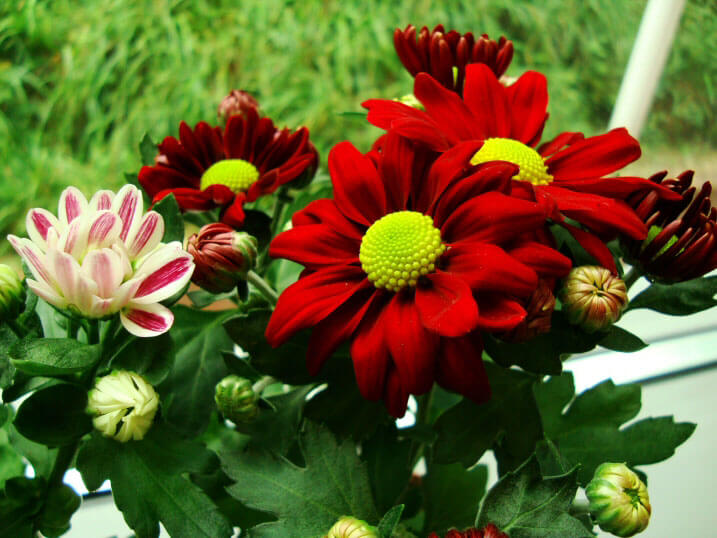London’s air pollution is shocking and filled with poison. Within the first five days of 2017 the city had already exceeded its supposed pollution limits for the year. Mayor Sadiq Khan issued the highest air pollution alert early in the year and Theresa May’s Government has fought desperately to try to delay until after the election any details of how it will respond to the toxic air in the capital. Apart from lobbying for political action and voting for candidates who will support tighter controls, how can we fight back to try to protect ourselves?
There is one simple, green and cheap step that every household can take to help protect itself. Fill your home with plants, the most natural air filters in creation. NASA has produced a scientific study listing the best houseplants for improving air quality.
The space agency got involved while researching which plants would be best for cleaning the air in space stations. While all plants absorb carbon dioxide and release oxygen NASA took into account the extra properties of hundreds of plants. Some plants produce oxygen in the day, while others work at night, and many varieties absorb different chemicals and toxins. NASA found that to clean air efficiently you should have at least one plant for every 100 square feet of enclosed space.
The plants that NASA recommends most highly are:
Snake Plant
 This is a great starter plant and perfect for people with “black thumbs” or a proven inability to grow anything. Snake plant, also known as mother-in-law’s tongue, is a very hardy indoor plant. Even negligent plant owners will struggle to kill this hardy variety.
This is a great starter plant and perfect for people with “black thumbs” or a proven inability to grow anything. Snake plant, also known as mother-in-law’s tongue, is a very hardy indoor plant. Even negligent plant owners will struggle to kill this hardy variety.
If you forget to regularly water your plants, a snake plant is very forgiving and can go a few weeks without any care. Producing oxygen at night, it combats xylene, formaldehyde, trichloroethylene, toluene, and benzene, which is found in lots of detergents and plastics.
Aloe Vera
 It is a well-known ingredient of a lot of healthcare and beauty products but Aloe Vera is also a great plant for fighting benzene and formaldehyde. Being a succulent, it needs good sunlight so it’s best to keep it by a sunny window.
It is a well-known ingredient of a lot of healthcare and beauty products but Aloe Vera is also a great plant for fighting benzene and formaldehyde. Being a succulent, it needs good sunlight so it’s best to keep it by a sunny window.
Aloe Vera plants are also great for burns, cuts and making delicious drinks, so keeping a few in the house to cut the leaves and use the gel inside makes this a great multifunctional plant.
Spider Plant
 These is one of the most common house plants due to its resilience. As long as it gets some indirect sunlight and some warmth, it should have no problem thriving. My favourite thing about spider plants is how easy it is to propagate the baby spiderettes that grow out of the main plant. Once you have one spider plant, you’ll end up with 10.
These is one of the most common house plants due to its resilience. As long as it gets some indirect sunlight and some warmth, it should have no problem thriving. My favourite thing about spider plants is how easy it is to propagate the baby spiderettes that grow out of the main plant. Once you have one spider plant, you’ll end up with 10.
Given that carbon monoxide is very dangerous and that spider plants are one of the most effective ways to combat it, why wouldn’t you want numerous spider plants in every room?
Florist’s Chrysanthemum
 Like the spider plant, chrysanthemum morifolium is safe for cats and dogs, while Aloe Vera and snake plant can both be toxic. The chysanthemum has the added attraction of filtering ammonia out of the air, as well as benzene, xylene, formaldehyde, trichloroethylene and toluene. A beautiful perennial, it needs to be watered two or three times a week.
Like the spider plant, chrysanthemum morifolium is safe for cats and dogs, while Aloe Vera and snake plant can both be toxic. The chysanthemum has the added attraction of filtering ammonia out of the air, as well as benzene, xylene, formaldehyde, trichloroethylene and toluene. A beautiful perennial, it needs to be watered two or three times a week.
Get rid of the poison in the air with these wonderful plants which will look after you all day long.
by Aly Blanchette
The post Polution: Protect Your Home from London’s Poison Air appeared first on Felix Magazine.
No comments:
Post a Comment